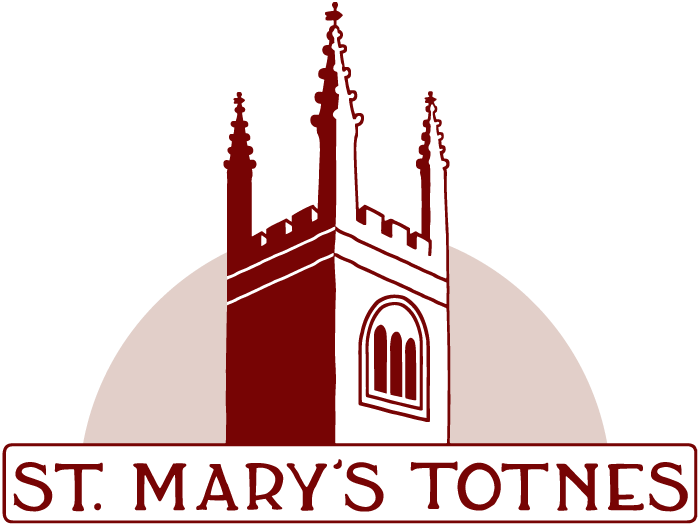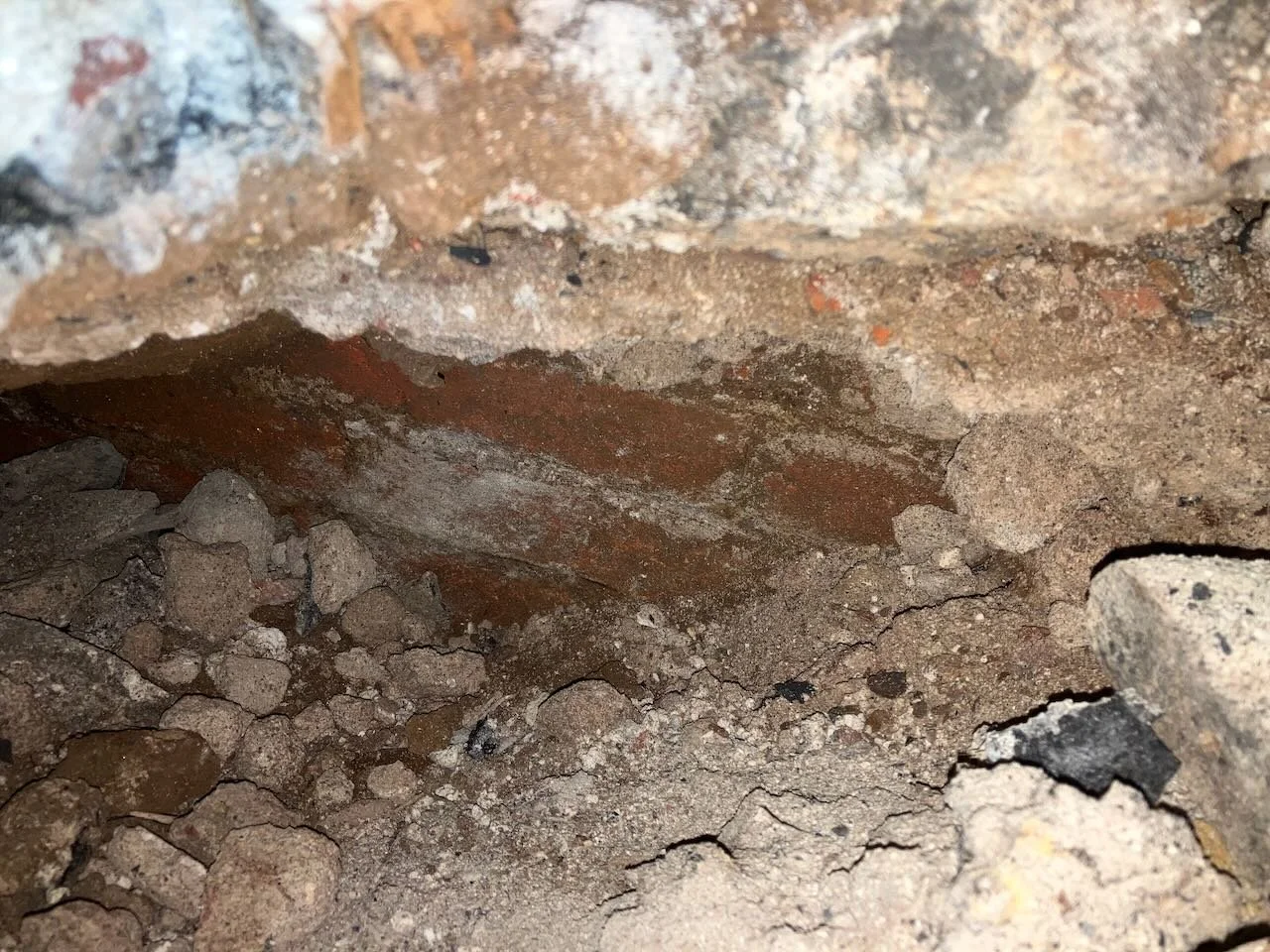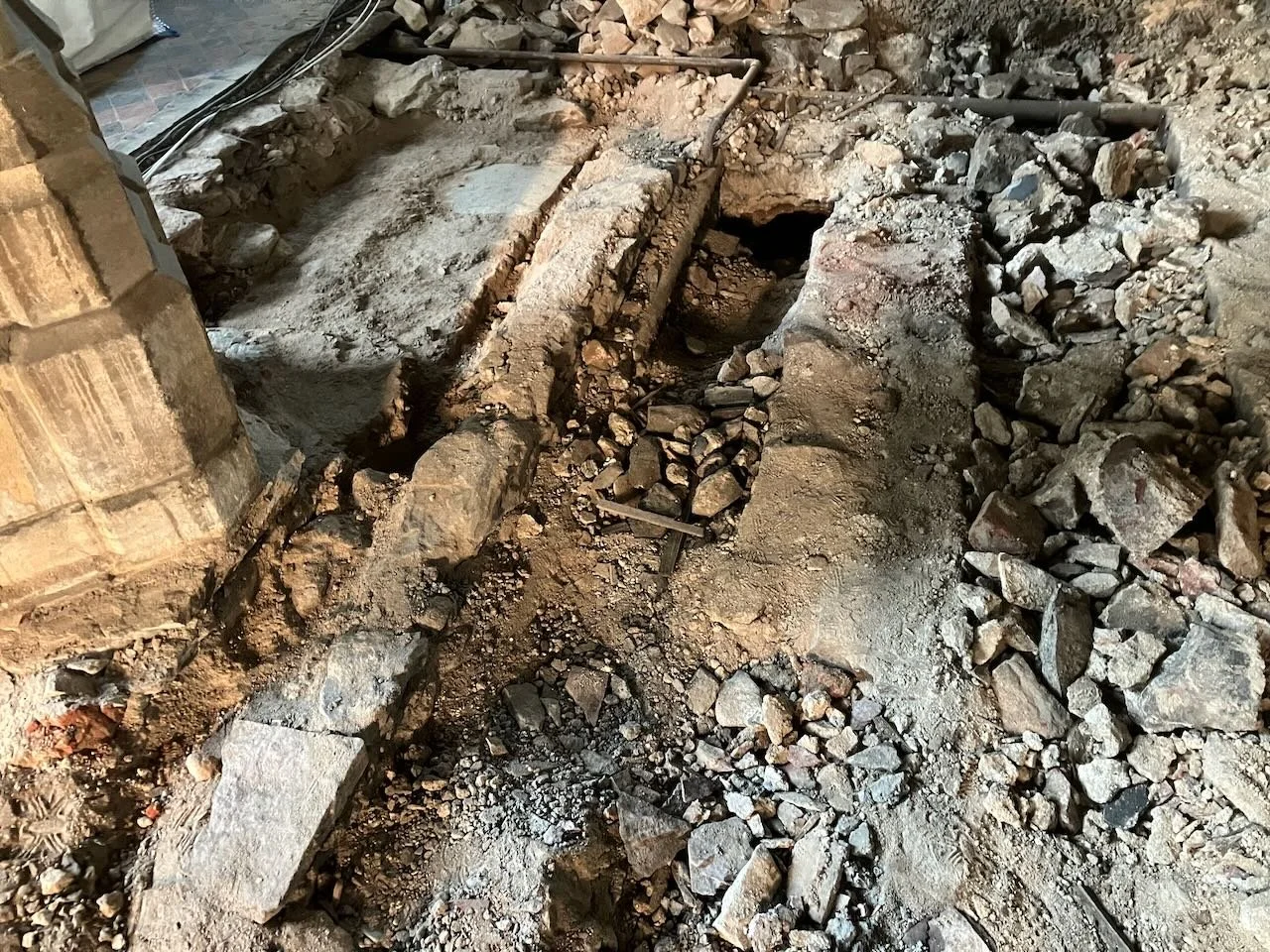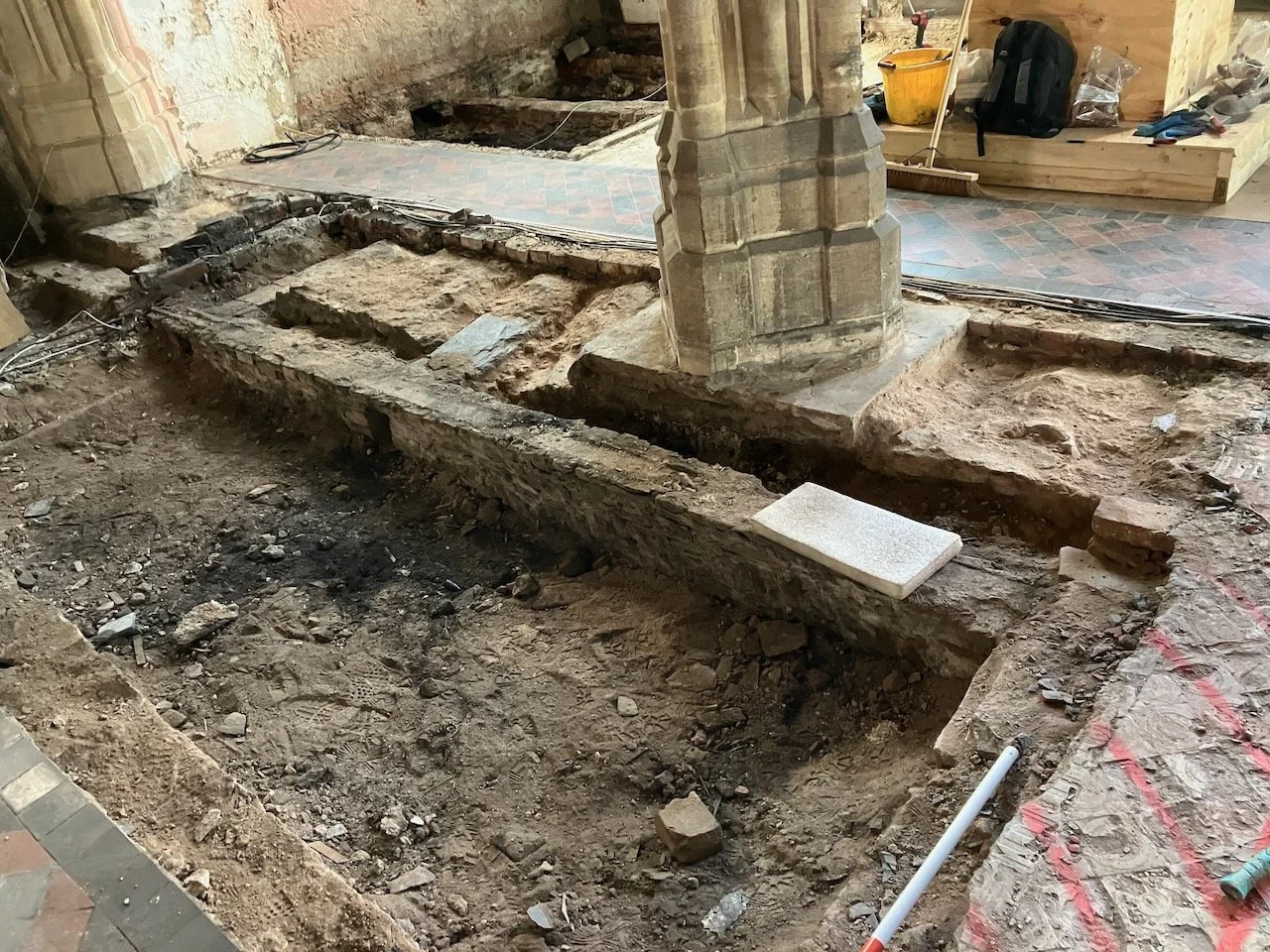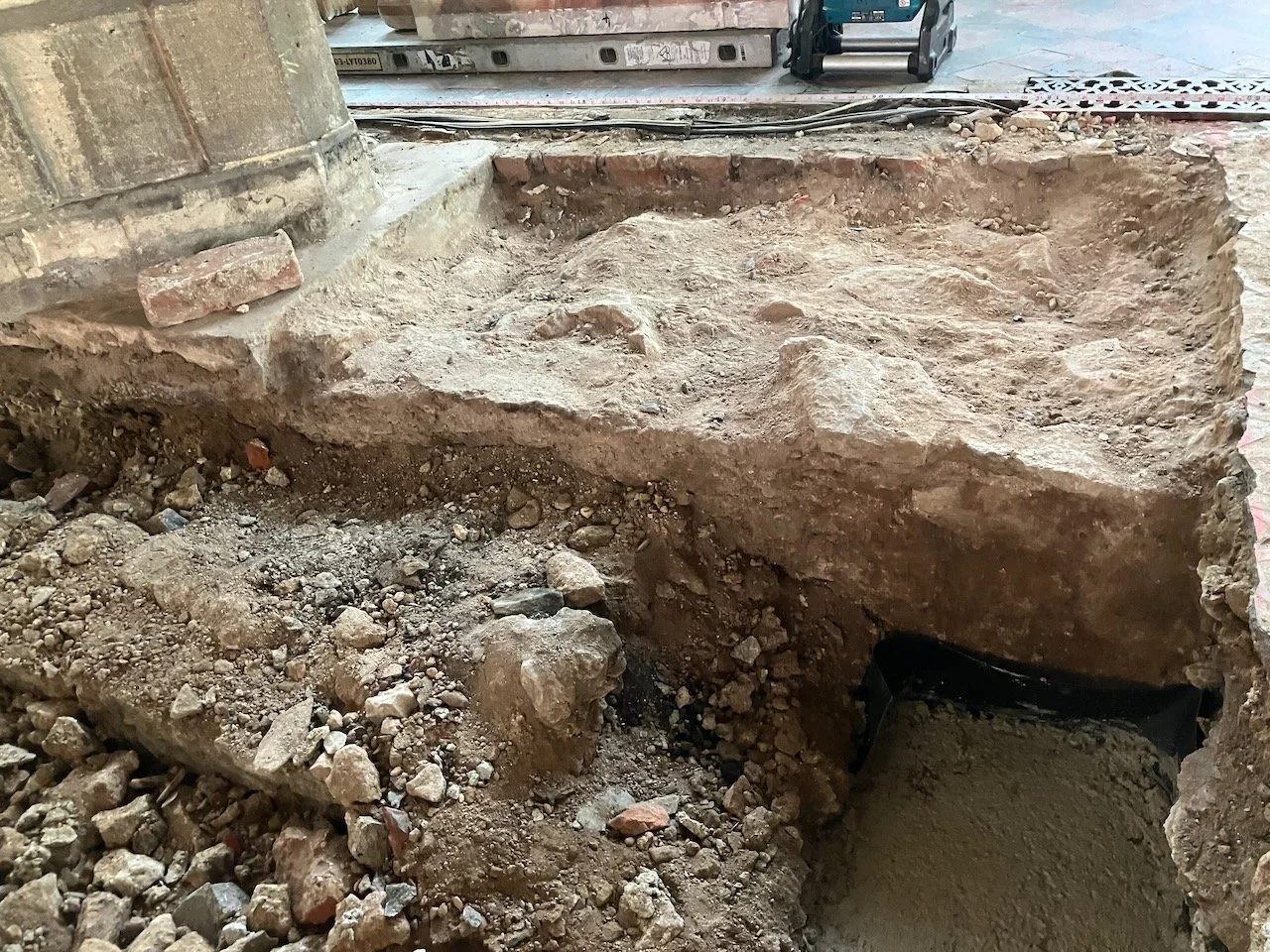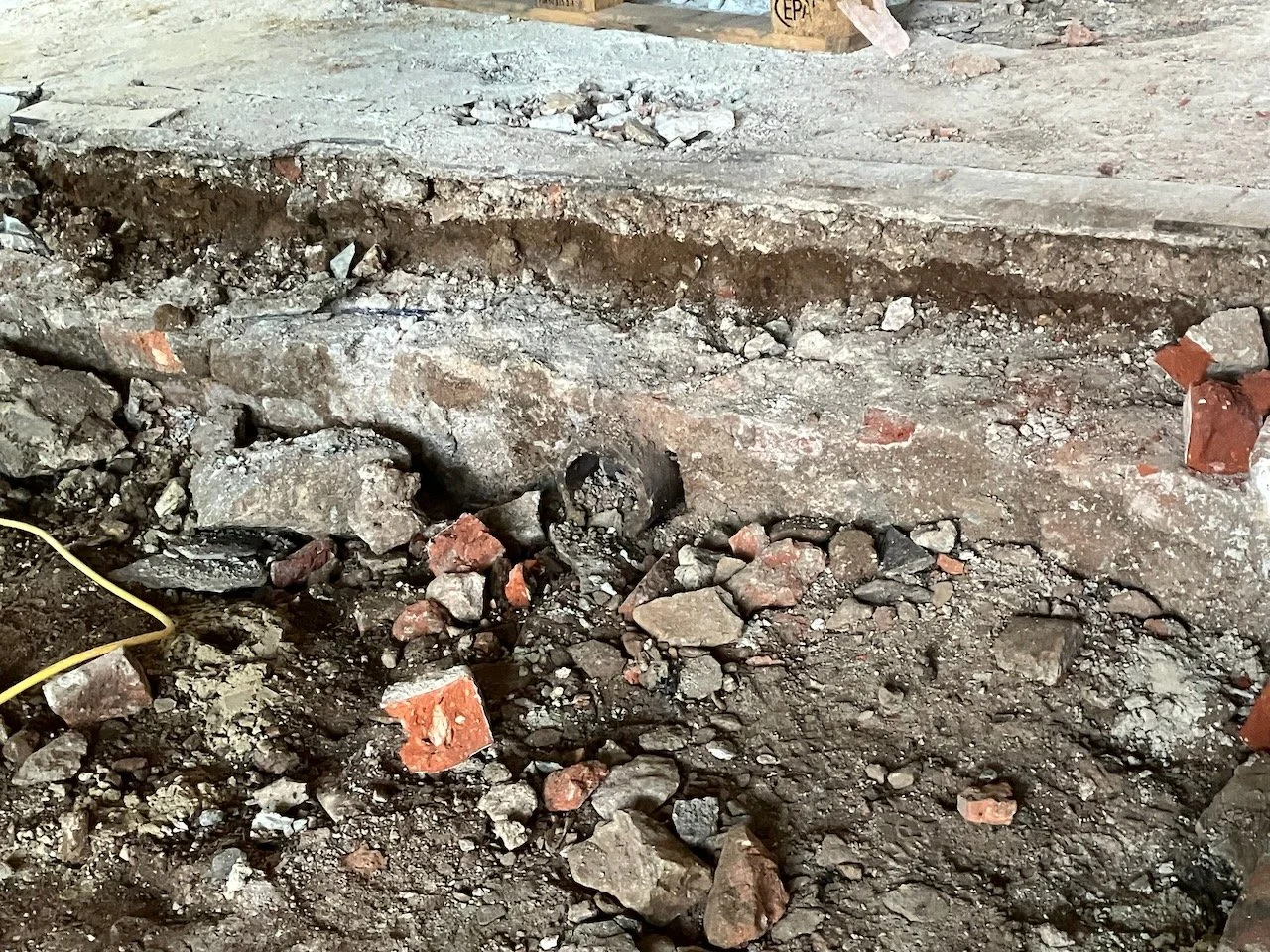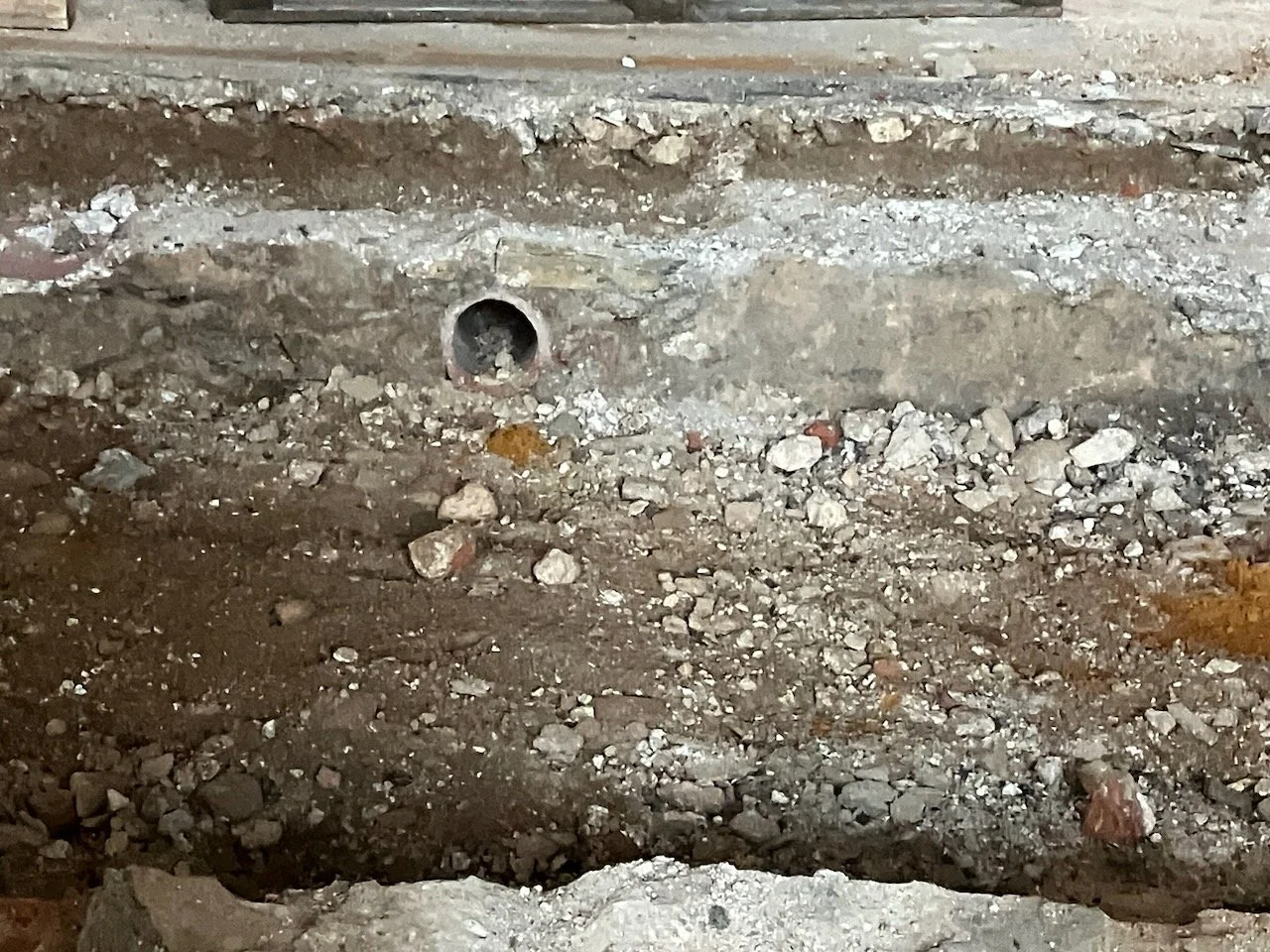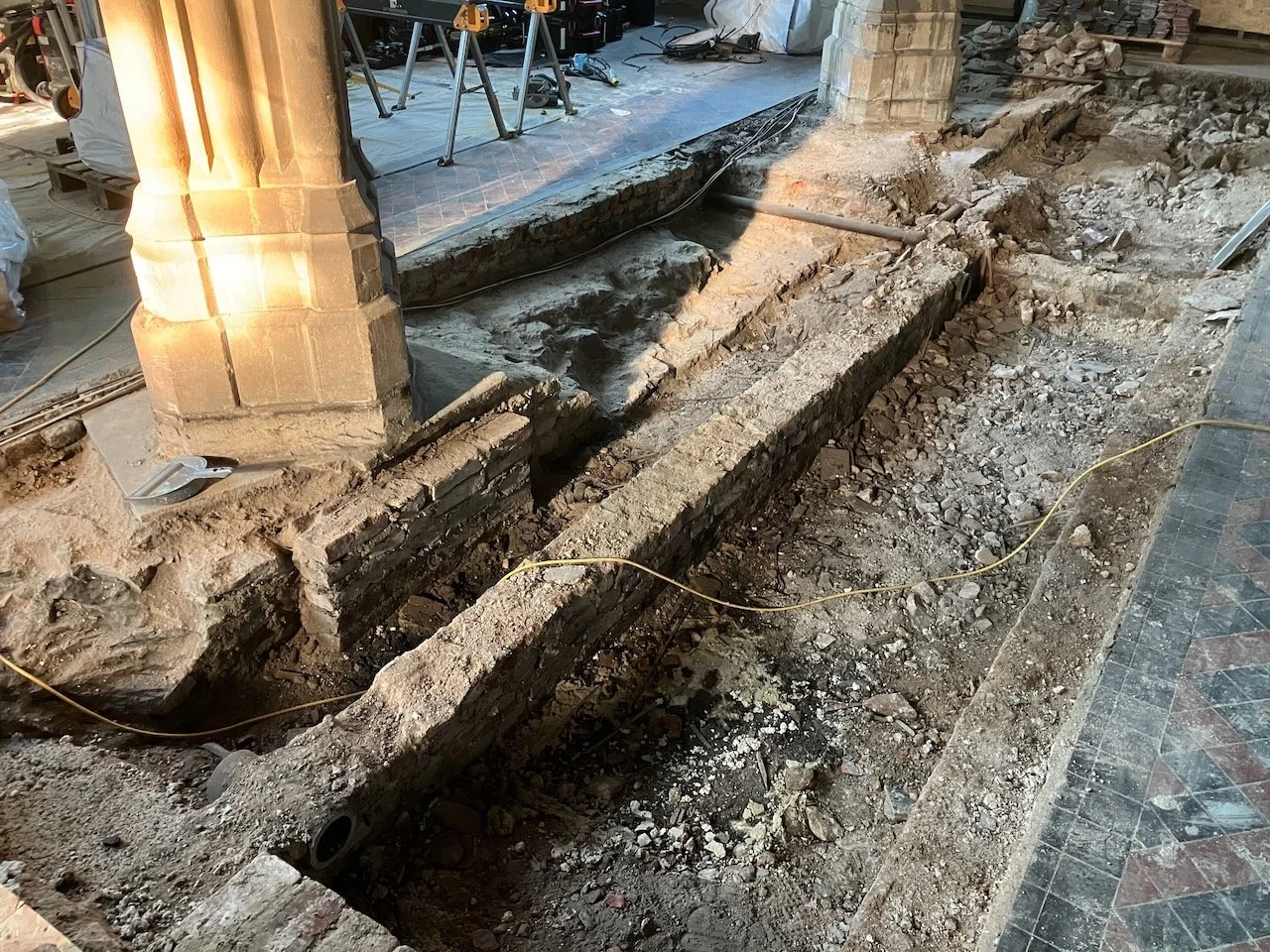Week 6 Update Holes and Mud
St Marys is looking beautiful in the May sunshine but inside it is a sea of rubble, dust and interesting holes
Work has continued with lot more rubble being removed and old tiles lifted, plus the building of new sub walls for the floor, re-using the Victorian bricks wherever possible. The project archaeologist Keith Faxon has continued cleaning and exposing the old walls on top of which the Victorian pillars were placed and the medieval pillar bases in the original three aisles. On Thursday as he was working in one of the voids he started to sink into the ground! This led to the (re)discovery of a brick lined vault just below the surface, probably going down 3 feet or more. When the Victorian took up the floor there would have been lots of these vaults. They date from after the Reformation, so 17th-18th centuries mostly. This one in the North aisle was mentioned in reports in the 1860’s. The Victorians generally took the tops off them (the ledger stones) and filled them with earth. However, the earth has subsided over time. We won’t excavate the vaults but we do need to stabilise them.
We have also discovered that the Victorian tiling in the aisles appears to have been laid on a bed of lime mortar beneath which is a layer of mud, then rubble. You may be able to see the mud as a dark reddish brown layer in the photos. Old Devon buildings often used mud in the walls but to find it used in this way in the Victorian era is unusual and something of a surprise. We have to work out what to do about it. It is probaly one of the reasons why the tiling has heaved over the years.
